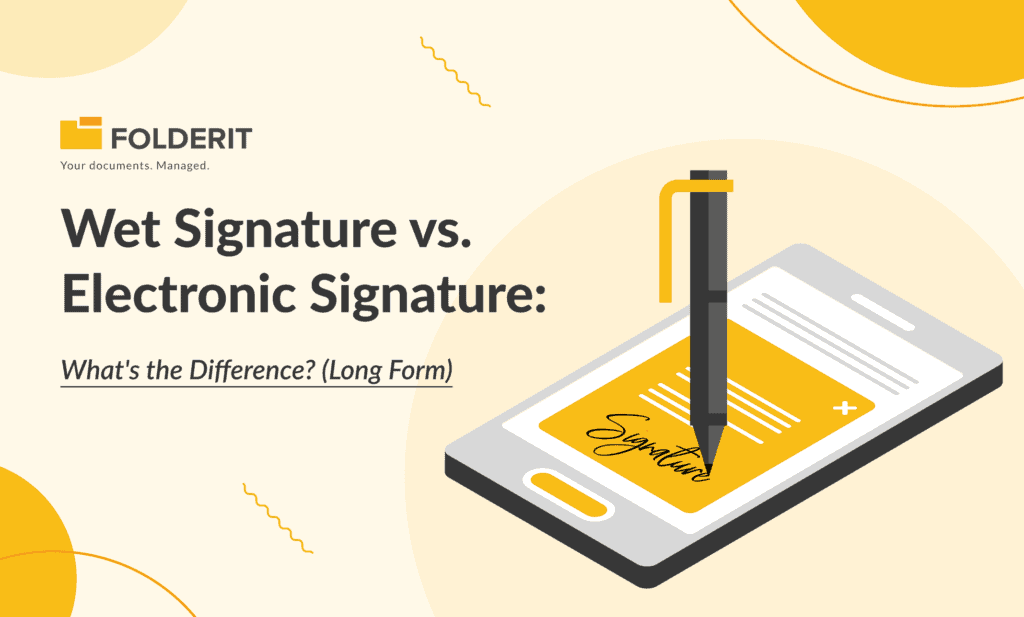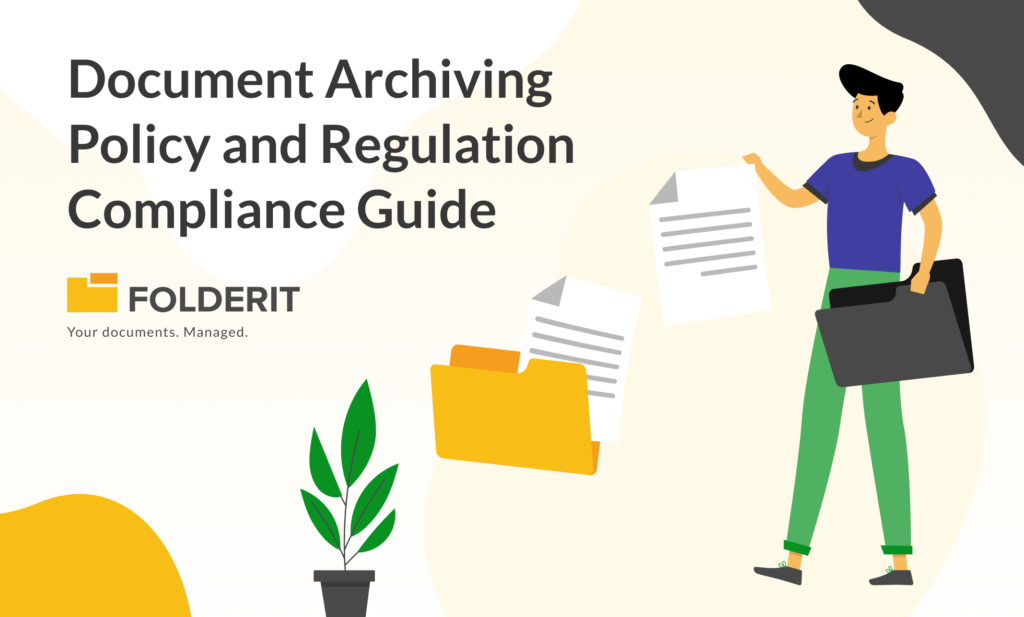The way we conduct transactions, sign contracts, and authenticate documents has evolved significantly. Among these advancements, the distinction between wet signatures and electronic signatures has become a focal point for businesses and individuals alike.
What is a Wet Signature?
A wet signature is created when a person physically marks a document with a pen. The term "wet" signifies the ink's need to dry on paper, a method that has been the cornerstone of document authentication for centuries. Wet signatures have been traditionally favored for their perceived assurance of the signer's physical presence and intent. They have played a pivotal role in legal documents, contracts, and agreements, ensuring that a physical act binds the signatory to the terms outlined within the document.
However, wet signatures are not without their drawbacks. The need for physical presence can be cumbersome in today's fast-paced and geographically dispersed business environment. Moreover, wet-signed documents require storage, pose a risk of damage or loss, and can be challenging to authenticate without additional measures.
The Limitations of Wet Signatures
The limitations of wet signatures primarily revolve around logistics and security. Physically gathering all parties to sign a document can delay processes significantly. Additionally, the risk of forgery and the challenge of storing physical documents securely add layers of complexity to managing wet-signed documents. These limitations highlight the need for a more flexible, secure, and efficient method of authentication, leading to the adoption of electronic signatures.
What is an Electronic Signature?
An electronic signature, as defined by Folderit, encompasses any signature applied in an electronic format. This broad category includes a range of methods, from digitally penning a signature on a tablet to clicking a checkbox or entering a unique code. Electronic signatures have gained legal recognition across many jurisdictions, offering a versatile alternative to the traditional wet signature.
Folderit eSign, Folderit's proprietary electronic signature technology, exemplifies the advancements in this area. It provides users with a secure, flexible, and legally recognized method to sign documents electronically, streamlining the document management process within Folderit's Document Management System (DMS).
The Legal Landscape of Electronic Signatures
Understanding the legal recognition of electronic signatures is crucial. In the United States, laws such as the Electronic Signatures in Global and National Commerce Act (E-SIGN) and the Uniform Electronic Transactions Act (UETA) have established the legal framework for the use of electronic signatures. These laws ensure that electronic signatures carry the same weight as wet signatures, provided they meet certain criteria regarding the intent to sign and consent to do business electronically.
A Look at the E-SIGN Act
Per the E-Sign Act, electronic signatures gain legal standing when the following conditions are met:
-
Each party exhibits a clear intention to sign,
-
Parties agree to conduct transactions electronically,
-
The signature is directly linked to the document and not stored independently,
-
Documentation is archived in a manner that is accessible to all involved parties,
-
There is a provision allowing signers to opt for a paper contract if desired.
Furthermore, the legislation acknowledges scenarios where a traditional wet signature might still be necessary, including:
-
Legal matters related to state and family law,
-
Judicial documents such as court orders, motions, and pleadings,
-
Notifications concerning foreclosure, eviction, or property repossession,
-
Announcements of cancellation for services like utilities or insurance,
-
Alerts regarding safety recalls.
A Look at the UETA Act
Under the Uniform Electronic Transactions Act (UETA), electronic signatures are afforded legal validity and enforceability under specific conditions, mirroring the principles established in the E-Sign Act but with a focus on uniformity across state laws. The UETA outlines that for an electronic signature to be recognized legally, the following criteria must be met:
-
Voluntary Participation: All parties involved in the transaction must agree to conduct business electronically, establishing a mutual consent framework.
-
Intention to Sign: There must be a clear intention by the parties to use electronic forms of signature, demonstrating consent and acknowledgment of the electronic format.
-
Association with the Record: The electronic signature must be logically associated with the record it is intended to validate, ensuring that the connection between the signature and the document is clear and undisputable.
-
Preservation and Accessibility: The electronic record, along with its signature, should be retained in a format that is accessible to all parties involved, allowing for future reference and verification.
-
Opt-Out Provision: Parties must have the option to withdraw consent for electronic transactions in favor of traditional paper-based methods, offering flexibility and choice in how transactions are conducted.
Additionally, the UETA specifies instances where electronic signatures might not suffice, similar to the E-Sign Act, including:
-
Exclusions for Certain Legal Documents: Documents related to family law, wills, trusts, and other specific legal documents might require wet signatures, depending on state regulations.
-
Court Documents and Notices: Certain legal notices, including those related to eviction, foreclosure, and court orders, may still require traditional signatures, reflecting the sensitivity and legal implications of these documents.
The UETA emphasizes the importance of adaptability and legal recognition of electronic transactions across state lines, promoting a standardized approach to electronic signatures. This act plays a critical role in supporting the legal framework for electronic transactions, ensuring that businesses and individuals can rely on the efficiency and security of electronic signatures while remaining compliant with state laws.
It's crucial to recognize that laws governing electronic signatures may vary internationally. Therefore, verifying local regulations is essential before initiating a digital signature process to ensure compliance and legal validity.
Types of Electronic Signatures
Electronic signatures can be categorized into three main types, each offering varying levels of security and authentication:
Simple Electronic Signatures (SES):
These include actions like typing a name under an email, ticking a box on a form online, or signing on a mobile device for a delivery. The identity of the signer isn't conclusively proven with a simple signature; it merely indicates that the signer had access to the email or received a unique access code.
Additional methods such as using a corporate ID, a password, or a PIN sent to an email or mobile phone can authenticate the signer to some degree. For instance, a signature stamp may be secured with a password, ensuring only the authorized individual can utilize it. Simple signatures are suited for internal processes needing approval or authorization, like HR approvals, invoice processing, or internal certifications, where the risk to their legal standing is minimal and no extensive identity verification is needed.
Advanced Electronic Signatures (AES):
These signatures involve encryption with the sender's private key, which a Trust Service Provider (TSP) issues, ensuring the signer exclusively signs the document. Additionally, the document's signing time is recorded, and the combined file and digital signature are forwarded to the recipient.
An advanced signature's authenticity can be verified through two-factor authentication, such as email or SMS responses, or even biometric verification for in-person or kiosk signings. Mainly utilized in B2B commercial contracts, advanced signatures offer a significant level of proof regarding the document's authenticity.
Qualified Electronic Signatures (QES):
The most secure form, qualified signatures, requires encryption and a certificate from a TSP, verifying the signer's identity and ensuring the document remains unaltered. These certificates are held by the TSP and are accessible anytime, creating a detailed audit trail for each signature. Although similar in some respects to a handwritten signature in terms of documentary proof, a qualified signature is legally binding and enforceable, making it suitable for signing a wide array of documents, including labor and commercial contracts, banking agreements, and insurance policies.
Each signature type serves distinct purposes, from facilitating internal document flows with simple signatures to securing high-stakes contracts with qualified signatures. This stratification ensures that electronic signatures can be adapted to various levels of security and verification needs, making them a versatile tool in the digital age.
The Benefits of Using Folderit eSign
Folderit eSign offers a plethora of benefits tailored to modern business needs, making it a compelling choice for those looking to streamline their document signing processes. Some of these benefits include:
- Enhanced Security: By leveraging AES, Folderit eSign reduces the risk of forgery and unauthorized access, ensuring that each document signed is secure and verifiable.
- Streamlined Processes: Folderit eSign simplifies the signing process, enabling documents to be signed electronically from anywhere, at any time. This flexibility significantly speeds up the approval and agreement processes, reducing the time from days or weeks to just minutes.
- Cost Efficiency: The digital nature of Folderit eSign eliminates the need for physical storage, postage, and printing costs associated with wet signatures. This not only saves money but also supports sustainability efforts by reducing paper use.
- Global Accessibility: With Folderit eSign, geographic boundaries are no longer a barrier. Signatories can sign documents from anywhere in the world, making it ideal for global businesses and remote work environments.
- Integration into Folderit's Ecosystem: Folderit eSign is seamlessly integrated into Folderit's Document Management System, enhancing productivity and efficiency. It provides a centralized platform for managing all signed documents, complete with automation and visibility options that empower users to track and manage the signing process effectively.
Conclusion
The transition from wet signatures to electronic signatures represents a significant shift in how we authenticate documents and conduct business. With technologies like Folderit eSign, businesses and individuals have a secure, efficient, and legally recognized method for electronic document signing at their fingertips.
Folderit eSign bridges the gap between traditional and digital methods, offering a comprehensive solution that enhances document security, streamlines processes, and ensures global accessibility. By embracing Folderit eSign, users are equipped with the tools they need to navigate the complexities of modern document management, empowering them to operate more efficiently and effectively in the digital era.



